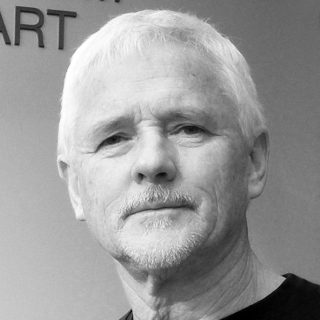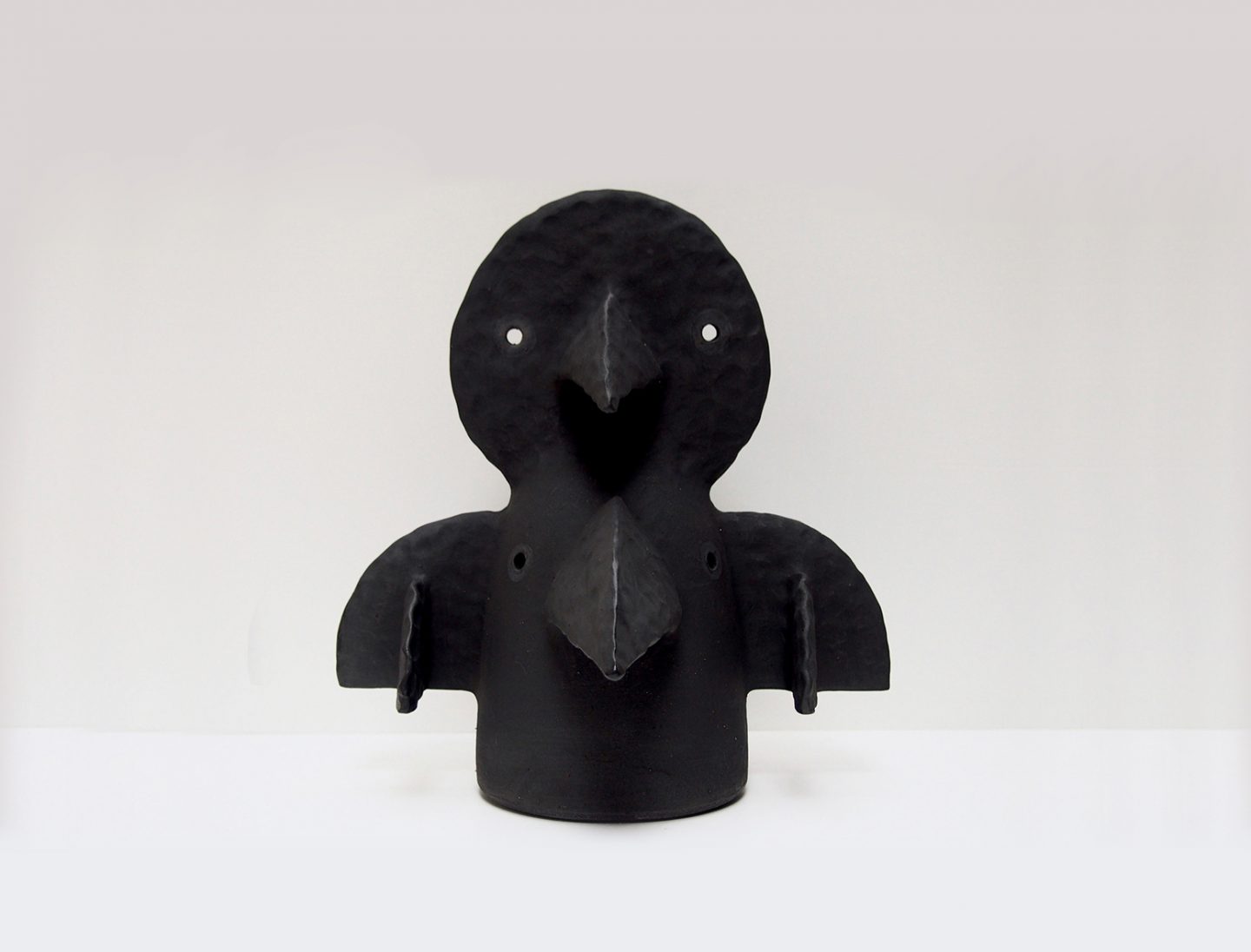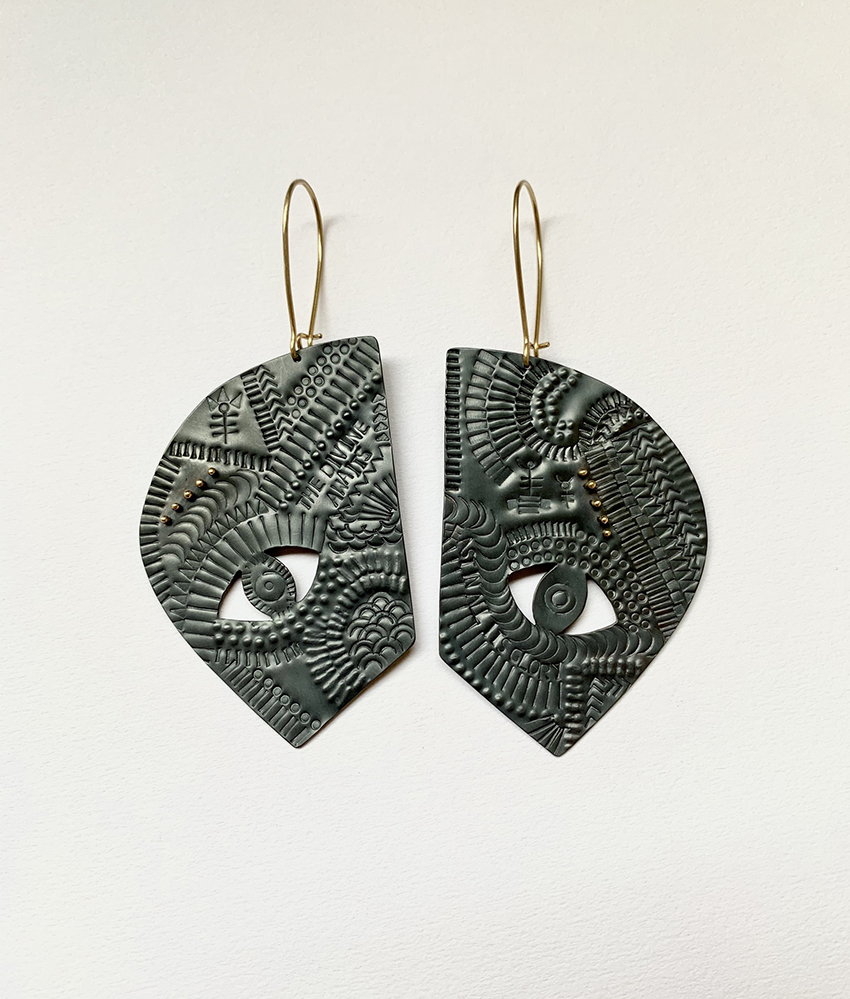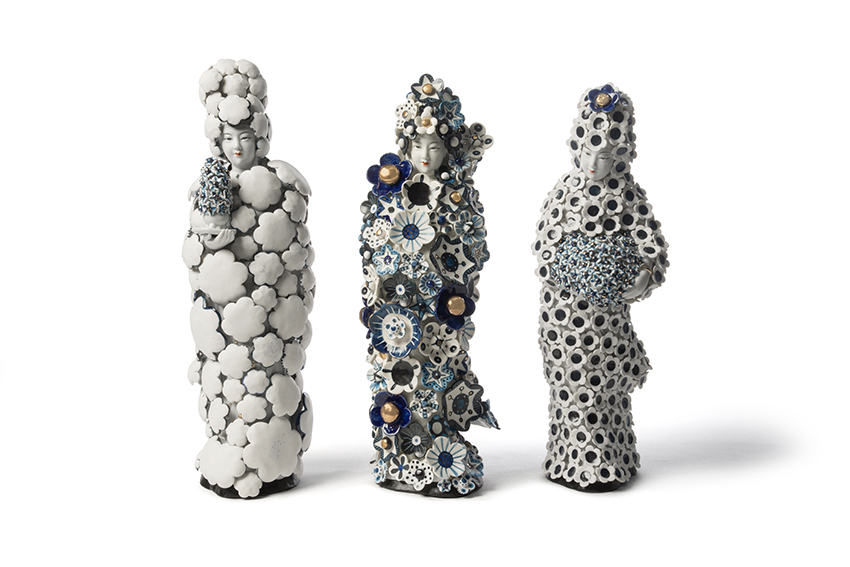
John Neylon
John Neylon is an award-winning art critic and the author of several books on South Australian artists including Hans Heysen: Into The Light (2004), Aldo Iacobelli: I love painting (2006), and Robert Hannaford: Natural Eye (2007).

Modern Mysticism at JamFactory sees a series of artists contemplate the divine, spirititual and cosmological through jewellery and sculpture.
Many ‘secular’ artists, who claim no specific religious affiliation, routinely invoke states of mind or beliefs that admit a sense of connection with the past or with nature. In this quest, object makers, (designers/craft artists/artisans) appear to have the best of it for a number of reasons. Materiality such as the behaviour and response of glass, silver or clay, for example, speaks directly to the senses and may even evoke sense-based memories or emotions. Traditional motifs and ritual practices can be acknowledged or extrapolated without inhibiting creativity.
As JamFactory’s current exhibition, Modern Mysticism, demonstrates, this materials-based conversation with traditions associated with notions of spirituality or sacredness can go way beyond style riffing. Curator Caitlin Eyre believes that there are dimensions to lived experience that lie beyond words but in the manifest of certain kinds of crafted artefacts. The greater part of this elegantly presented exhibition is composed of jewellery. Inspired by the imagery and ritual function of idols, icons, myths, legends, symbols and religious practices, these intricately worked items – rings, earrings, necklaces and the like – are embedded and layered with historical references to ages of faith and ritual.
Artist and jeweller Emma Homfray’s talismanic jewellery draws on her own experiences with the occult. Her Pearl Crowned Serpent Ring, for example, features a coiled black snake adorned with a single black pearl, the oxidised silver and dark-toned pearl chosen to represent the dark moon and the energies of Binah, Hekate and the High Priestess of the tarot. Gaze at this little black serpent long enough and imagine its inner energy pulsing as you slip it onto your finger. Knowing that the Greek mythological goddess Hekate was capable of both good and evil, and is associated with creatures of the night such as hellhounds, might put a spring in your step.

The ancient, classical world stays in the frame with the gold and silver smithing of jeweller Vikki Kassioras. Her ideas are informed by a lifelong interest in archaeology, mythology and the aesthetics of Greek and Etruscan jewellery. Her necklaces and earrings in Modern Mysticism are from her most recent body of work, the Tear Charmers collection, which is based on her research on ritual tears and stories from classical mythology that have themes relating to grief, sorrow and distress. There is an engaging informality about these items. The stylised tear shapes are enlivened with simple dimple punching, which, together with heavy surface wrinkling created by heating, gives each piece a distinctive craggy character. Kassioras refers to this deliberate wizening as “flirt[ing] with antiquity”.
Tara Lofhelm’s jewellery occupies similar territory in that they use similar techniques of piercing and embossing. Small items like the Divination Earrings reward a close view as words are stamped into surfaces. There is a lot going on in these simple shapes, particularly references to patterning and tribal scarification. Their cut-out design aesthetic reinforces a resemblance to archaeological shards and fragments.
In contrast, Juan Castro’s jewellery delivers the full Byzantine/Baroque luxe package with all stops out. The materiality of pearls and amethysts set in gold evoke courtly and ecclesiastical patronage and taste. Forget just feeling good or connected to the ancestors when wearing these items. They shout style, power and privilege. Castro’s ability to translate a life-long fascination with votive rituals and religious iconography into a creative practice is evident in subtle referencing of styles and motifs, hinting at sources as diverse as Islamic tiles, Byzantine and Visigoth jewellery, amulets and crowns.

Eyre has described Peta Armstrong’s ceramic sculptures as “modern day idols imbued with the power to remedy the general malaise and negativity that arise in daily life “. The small, masklike objects are cross-cultural in their resonances. Like most masks they tease the imagination. Perhaps these little figurines have some agency? The artist says “If I can allow my mind to wander and be in a peaceful state when making, can the observer not do the same?” From this perspective their presence in daily life may have a part to play in healing troubled souls.
The work of Vipoo Srivilasa, a Thai-born Australian artist, appears to be motivated by similar ideas. His three porcelain figurines derive their devotional character from their basic structure: imported, factory-made porcelain statues of women. Each figure is encrusted with small, floral units leaving only the faces peering out from the ‘foliage’. The flowers are attached to the figure with Blu Tack, which makes them vulnerable to accidents. Srivilasa regards this as a metaphor for the fragility of overlapping but different cultural traditions.
‘Modern mysticism’ is a big theme for such small objects to bear. But Eyre, as curator, has seen something in them which suggests that hand craft ed objects of reflection and beauty can remind people that notions of the sacred or spirituality have a part to play in negotiating contemporary experience. They may work for you in this way, or maybe not. See for yourself.

John Neylon is an award-winning art critic and the author of several books on South Australian artists including Hans Heysen: Into The Light (2004), Aldo Iacobelli: I love painting (2006), and Robert Hannaford: Natural Eye (2007).